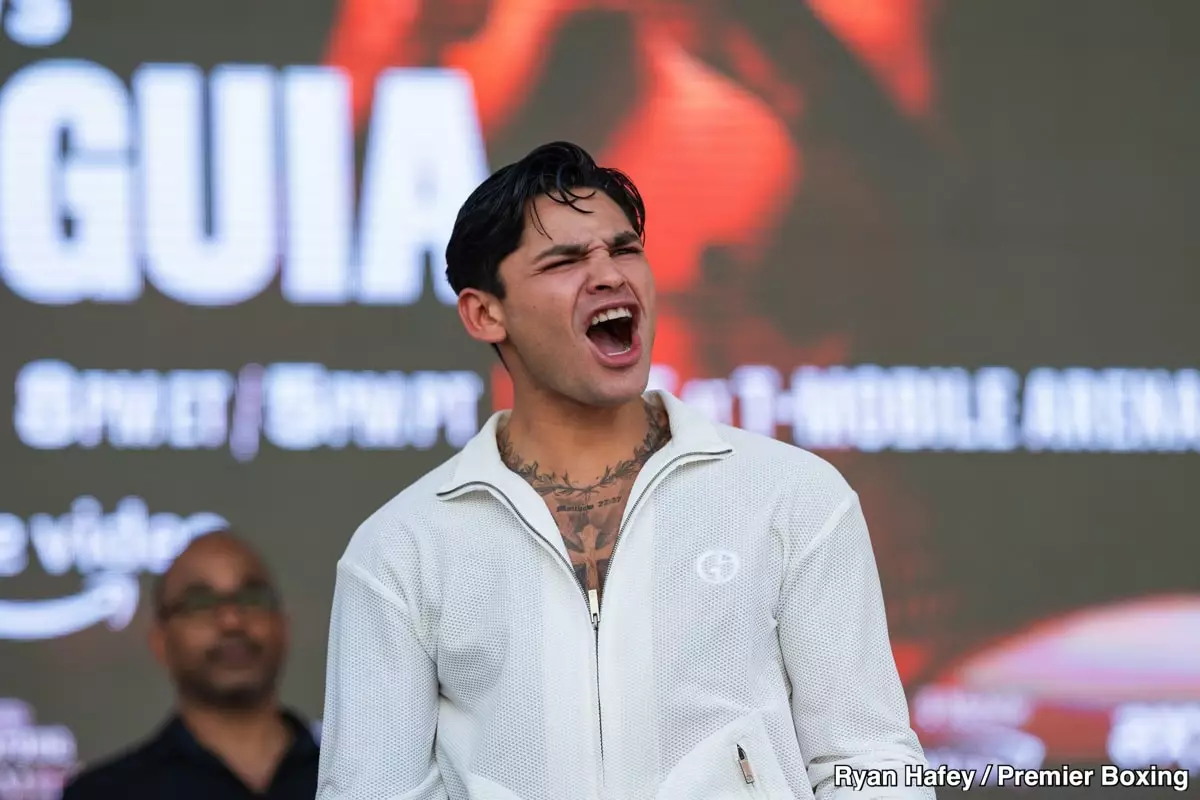Ryan Garcia, known for his dynamic boxing style and formidable punching power, is on the brink of a significant bout that could reshape his professional trajectory. Rumors are swirling that he will face Teofimo Lopez in May at Times Square, a match viewed as a critical tune-up before he embarks on a rematch series against reigning champion Devin Haney. With a record of 24-1 and 20 knockouts, Garcia’s choice to engage with Lopez, who boasts a powerful 21-1 record with 13 knockouts, raises eyebrows among fans and analysts alike. Many are questioning if this is a prudent decision, given Lopez’s reputation as a fierce competitor in the 140-pound weight class.
While Garcia is gearing up for crucial matches that could define his career, the decision to jump back into the ring against a formidable opponent like Lopez is a double-edged sword. Not only does it serve as preparation for Haney, who he is slated to face in October, but it also runs the risk of derailing his momentum should he suffer defeat. Critics argue that facing Lopez—a known knockout artist—could prove detrimental, especially since Garcia’s last bout against Gervonta Davis ended in disappointment. Many wonder if he might be overwhelmed by Lopez’s power, leading to echoes of his previous loss.
Adding another layer to this narrative is Garcia’s reported three-fight deal with Turki Al-Sheikh, a financier with a distinctive approach towards boxing that differs from traditional promoters. Al-Sheikh’s philosophy seems to embrace the notion that fighters should be allowed to take risks, even if it results in a loss. This creates a unique dynamic; while most promoters would see a defeat as a setback, Al-Sheikh’s perspective may allow Garcia to maintain his standing in the sport despite potential pitfalls. It’s a radical shift reminiscent of the UFC, where fighters face tough opponents regularly and remain in the spotlight even after setbacks.
Interestingly, Al-Sheikh’s philosophy mirrors trends observed in professional wrestling, where performers often find ways to retain fan loyalty despite losses. This raises questions about the long-term ramifications for boxers in a similar vein. Can a fighter’s popularity endure if they frequently face adversity in the ring? Much depends on the narratives constructed around their careers, as illustrated in Garcia’s potential match-ups against both Lopez and Haney. A victory over Lopez not only bolsters his resume but might also reestablish him as a top contender in boxing, even after a year-long suspension.
Ultimately, the challenge that Garcia faces against Lopez is indicative of a larger trend within the sport. Boxing is witnessing a shift toward acceptance of high-stakes matches, reflecting the reality that losses can be part of a fighter’s story. How Garcia navigates this impending fight will likely determine his path forward. Should he succeed, it not only elevates his profile but also sets the stage for an explosive rematch with Haney. As the boxing world anticipates these pivotal match-ups, one question lingers: Is the risk worth the reward? Only time will tell as the next chapter in Ryan Garcia’s boxing career unfolds.

